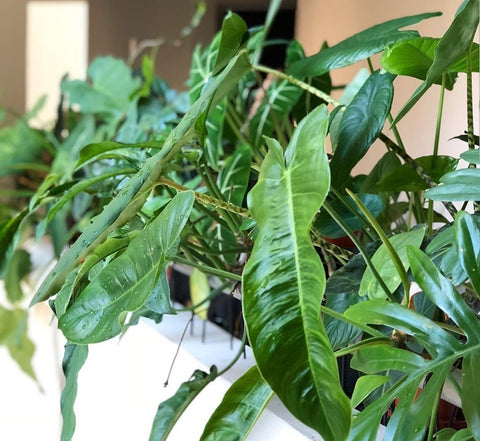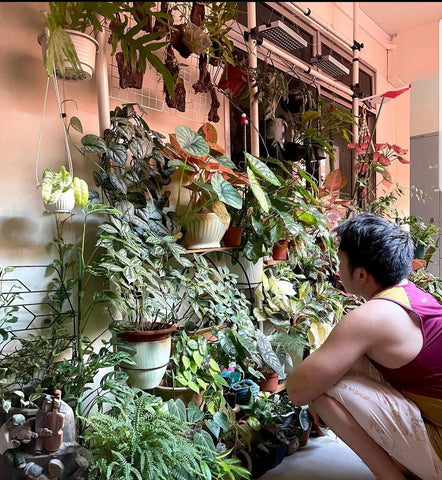
Understanding Light in Singapore HDB setting
Good day plant folks!
Today I will share with you 4 simple ways to understand light requirements in a typical HDB setting. As you know, most information online are suited mostly for the western climates. Do take a day to observe how the light comes into your home. I will share 4 types to help you recognize amount of the light in your HDB homes.

1) Full sun
This is basically direct sun rays that hit your plants. You can even feel the heat on your skin. A minimum of 6 hours of direct sun is sufficient for your full sun loving plants. If you have west facing windows, your house is more likely to receive lots of hot afternoon sun. Do water these plants frequently as these plants generally drink more water due to the heat. If your house have full sun, you are super lucky. You can keep almost everything in your house. You might even start a plant business.

(Plants getting full sun blasted @david_s_garden)
2) Indirect bright light
This category is pretty tricky to recognize. There are two places you can place them. One of it is putting your plants beside a window that does not have full sun blasting in. It has to be bright enough to cast a fuzzy to almost clear shadow (use your hand to test). If you do not have sun blasting in your homes, the best bet is to place your plants next to your windows. Almost all windows in Singapore have some form indirect bright light. Another place that mostly have indirect bright light, is your HDB corridor. Do add a rack so your plants are not blocked by the parapet. The parapet blocks the light completely, so raising your plants aligned to the parapet will give them the perfect amount of light. Do take note some HDB corridors have strong full sun and please be careful and not contribute to killer litter.

(Indirect bright light next to the window, note the fuzzy shadow casted behind the plants @rockinmarvin)

(Some HDB corridors can get really dark. Here's an example of plants lifted along the parapet top to get indirect bright light @alphabeticalife)

(some corridors get too much sun so move the plants further back, this results in indirect light too @rockinmarvin)

(Indirect bright light on the left and shade on the right @alphabeticalife)
3) Shade
Shade is the least desirable amount of light but some plants can thrive off it. Shade is basically 1-2m away from your windows in your home. You can barely make a shadow and probably squint reading a book. Only selective plants like sansevierias and ZZ plants can live in this environment. Do watch your watering and use draining soil mixes for this area. Also, do not keep your plants in a HDB toilet. That is not shade and will not filter your stinky toilet air.

(Sansevierias on dining area about 2m away from the window, this is considered shade @still.retired.goddess)
4) Morning sun
This is the best sun to have for most plants. If your corridor or window have blasting sun from 7-10am, you are blessed. The great thing about morning sun is that it is super bright and does not feel hot to the touch. Most indoor plants do well when given morning sun. So if you have the time, move them to the rays in that area of your house. Do take note that some plants cannot be touched by the rays (forest floor plants etc). If you have morning sun, that is plant heaven.

(Blasting morning sun from an east facing window, gentle sun rays @alphabeticalife)
Hope you like my first blog entry! Do remember, by being more compassionate to your plants, you will end up being more compassionate to yourself.
- Fendi

Veron
Hi Fendi! I recently became a plant parent and currently learning about how to care for plants and understanding the environment they thrive in. Your article is super helpful to help me understand sunlight in HDB context!! May I ask something – do the HDB corridor lights that are automatically switched on at night affect plants from “resting”? I understand that it is not healthy for plants to be under light for 24 hours, they need to take a break too, so I’m wondering if HDB corridor light is a problem for plants. Thank you.